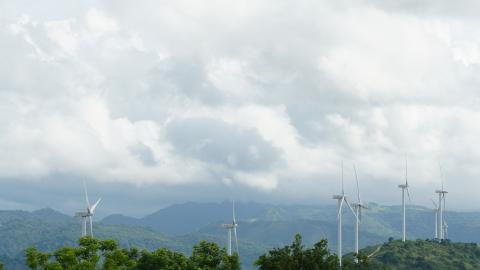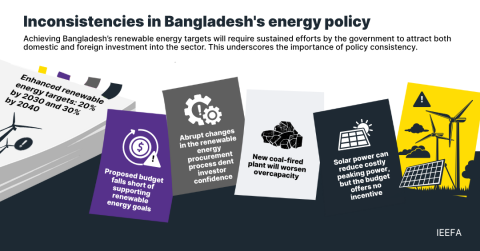IEEFA update: The hurdles to an economically viable Navajo Generating Station remain
Word is that a deal is still in the works to keep the coal-fired Navajo Generating Station open past 2019.
It’s not an impossible task, but it would come at a high cost and it would require the owners to pull off two near-Herculean feats.
First, production costs would have to be severely slashed. Tucson Electric Power, one of the current owners, has projected that it would cost an average of $56-$57 per megawatt hour (MWh) to operate and maintain the plant from 2020 to 2030. It is extremely unlikely NGS power at anywhere near that price can be sold on the power market or even through power purchase agreements (PPAs)—except, perhaps, for a very limited number of peak hours during the summer months.
A buyout proposal by Chicago-based Middle River Power assumes NGS could sell electricity at $26.84 per MWh, less than one-half of what the Tucson electric company has projected it would cost to produce NGS power. Such a price is achievable—and sustainable only if production costs are curtailed drastically.
To get where it needs to be profit-wise, Middle River or any other owner would have to lay off workers and cut wages and benefits for remaining employees at the plant, which is in northeast Arizona and is the biggest coal-fired electricity generation station west of the Mississippi. Miners at Kayenta Coal Mine, which supplies the plant, likely would be similarly affected. Running the plant on a mostly seasonal basis, during peak-demand summer months, as the prospective owners apparently have discussed, could lead management to push many current full-time workers into part-time positions.
The second trick to keeping NGS financially viable after 2019 is that the new owners will have to achieve “revenue certainty.” That is, they will want to have an ironclad PPA or several ironclad PPAs in place to ensure they will get high enough prices for their electricity to turn a profit.
There’s actually a third way to keep the plant going—but it would require a huge government bailout, something that does not seem likely given the pushback across the energy industry from coal-generation rivals that include a wide range of energy consumers and natural gas and renewable energy suppliers.
Beyond the near future, it’s doubtful that (1) production costs can be cut enough to make the plant profitable for more than a few years—if that—and (2) customers can be found who are willing to tie themselves to a PPA for power from NGS. Remember, natural gas prices are low and are expected to remain low for a long time. Solar and wind PPA prices are dropping steadily, and renewable-generated electricity is on the rise.
THE BOTTOM LINE HERE IS THAT MIDDLE RIVER POWER HAS LITTLE CHANCE of generating a profit on NGS without a big bailout, which could come by way of the federal government—a possibility that seems increasingly hindered by political resistance—or from the Arizona Corporation Commission requiring the Arizona Public Service Electric Co. (the biggest utility in the state) and/or TEP to buy lots of very expensive power from NGS.
The latter seems improbable, if only because such a move would drive electric rates up statewide for households, businesses, and industry.
Barring all that, one other troublesome scenario that could occur is a Navajo Nation takeover of plant operations, or a Navajo Nation move to hire someone else to run the plant on its behalf. This would require the Navajo Nation to absorb the difference between the cost of producing power at NGS and the prices at which it could be sold into the grid. It would very likely be a fiscal disaster from the get-go.
Here’s an example of what could happen. Say the Navajo government in Window Rock were to take over the plant and were able to cut production costs to $45 per MWh from the $56-$57 range that Tucson Electric Power forecasts (a 20% reduction, which would be possible only if severe cuts were made). And say that average peak period energy market prices will be $35 per MWh in 2020. That still would mean a $10 loss on every MWh sold and a $100 million loss every year in which the plant generates and sells 10 million MWh of power.
Market conditions suggest an economic disaster any way you cut it, and one that that would cause pain for workers, miners, and other members of the Nation.
There are sensible ways to invest in a region in need of federal attention on many levels. This is not one of them.
David Schlissel is IEEFA’s director of resource planning analysis.
RELATED ITEMS:
IEEFA op-ed: A U.S. coal bailout wouldn’t stop electric sector transition
IEEFA update: Heartland U.S. utilities continue to move away from coal
IEEFA Update: 2 Out-of-State Potential Navajo Generating Station Buyers Face Long Odds















